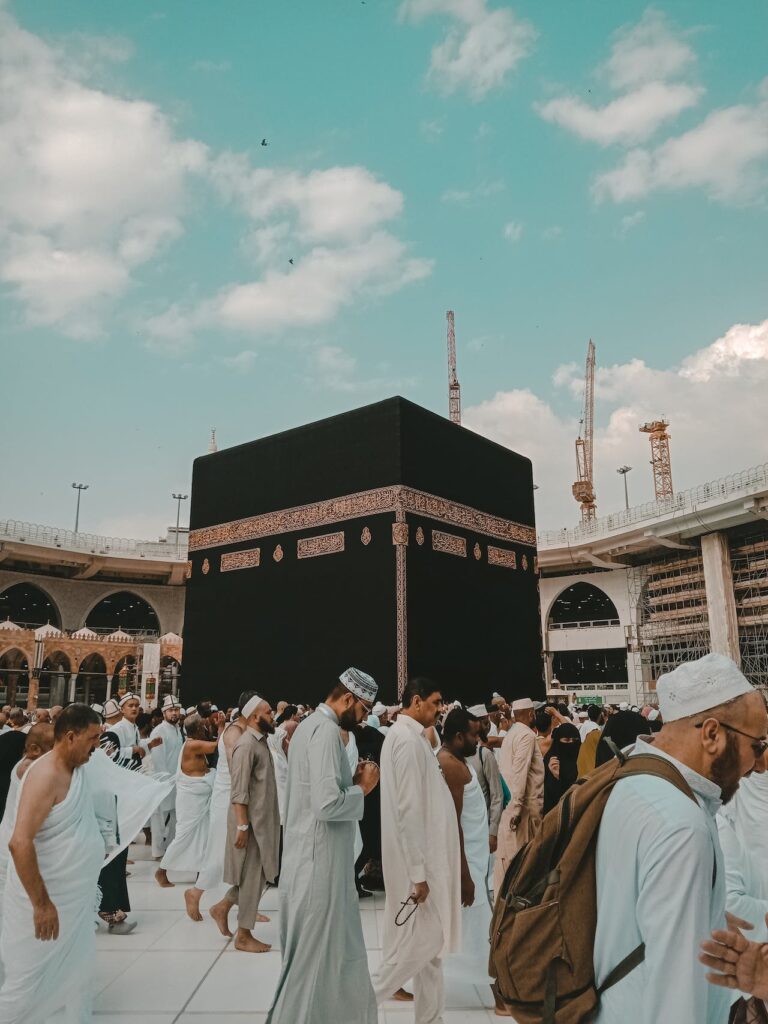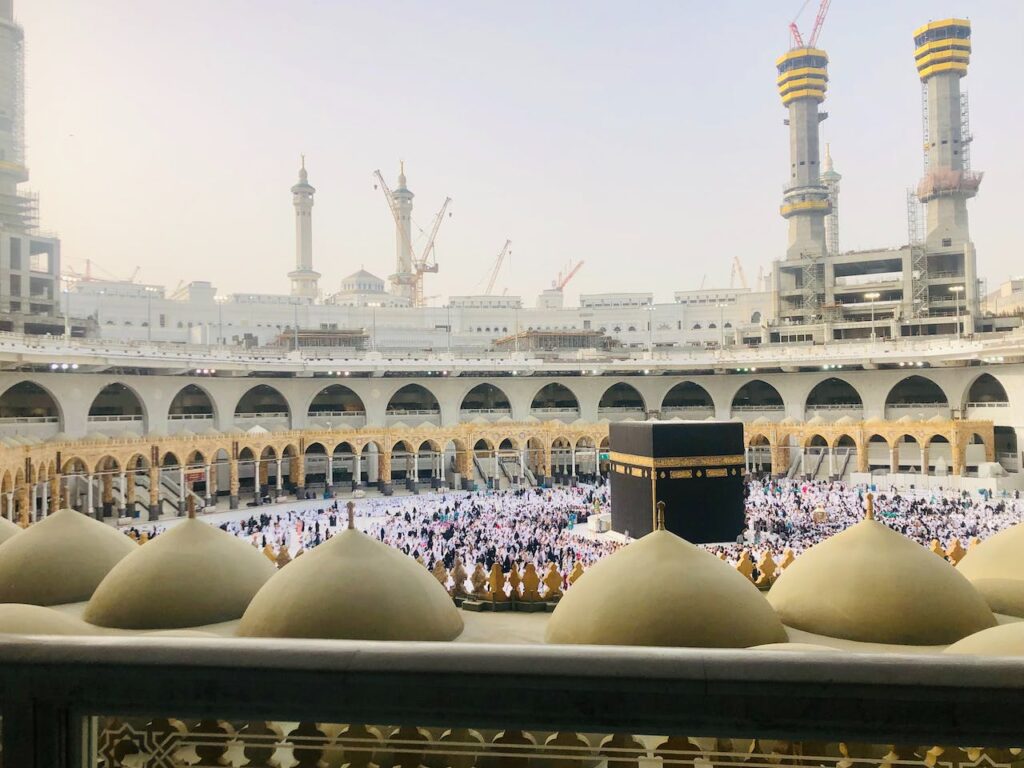This article aims to provide a comprehensive understanding of clothes for Tawaf, as per different Islamic jurisprudence. The focus will be on exploring the clothing regulations under Hanafi, Maliki, Shafi’i, and Hanbali laws. Both men’s and women’s clothing requirements will be discussed in detail.
Understanding these rules will not only ensure you are adhering to the Islamic guidelines but also enhance your spiritual experience
by focusing on the essence of the ritual rather than worrying about the attire. So, let’s delve into these rules and clarify any misconceptions.
Clothes For Tawaf in Hanafi and Maliki Law
According to the Hanafi and Maliki schools of thought, the clothing rules for Tawaf are based on the principles of modesty and respect for the sanctity of the ritual. Let’s look at their rules for both men and women.
Ruling For Men
As per Hanafi and Maliki law, men are required to cover their Awrah, which extends from the navel to the knee, during Tawaf. If they are performing Hajj or Umrah, they should wear the Ihram – two pieces of unstitched white cloth. One piece covers the lower body, from the waist to the knee, and the second piece is draped over the shoulder, covering the upper body.
The clothes should not be made of silk or contain any forbidden materials. Also, they should be clean and free from any impurities. Men can wear their regular, modest clothes for Tawaf if they are not in a state of Ihram.
Ruling For Women
According to Hanafi and Maliki laws, women are required to cover their entire body, except their face and hands, during Tawaf. The clothes should be loose and modest, not revealing the shape of the body. Women can wear their regular clothes, provided they adhere to these guidelines. The clothes should also be free from impurities.
Women should not cover their faces during Tawaf, even if they normally do so unless they are in the presence of non-Mahram men. The headscarf (Hijab) should not touch the face,
and it is recommended to use a headband or something similar to prevent this.
For more insights on Tawaf rules, you can refer to “What Do Muslims Say During Tawaf?“.
Clothes For Tawaf in Shafi’i and Hanbali Law
Similar to the Hanafi and Maliki schools, the Shafi’i and Hanbali schools also emphasize on modesty and respect for the sanctity of Tawaf when it comes to clothing rules. Let’s delve into the specifics for men and women according to these schools.
Ruling For Men
In the Shafi’i and Hanbali schools, the Awrah for men, which must be covered during Tawaf, extends from the navel to the knee. Men performing Hajj or Umrah should wear the Ihram, which consists of two pieces of unstitched white cloth. These clothes should be devoid of silk or any forbidden materials and must be clean and free from impurities.
When not in a state of Ihram, men can wear their regular, modest clothes for Tawaf, ensuring that they cover their Awrah and maintain the purity and respect of the ritual.
Ruling For Women
According to Shafi’i and Hanbali law, women are required to cover their entire body, except the face and hands, during Tawaf. The clothes should be loose, modest, and not revealing. Women can wear their regular clothes, provided they adhere to these guidelines, and the clothes are clean and free from impurities.
Women are not required to cover their faces during Tawaf unless they are in the presence of non-Mahram men. The Hijab should not touch the face,
and women are advised to use a headband or similar item to prevent this.
For a deeper understanding of Tawaf rituals, a visit to “Rituals of Tawaf: All You Need to Know” would be beneficial.
Alternative Interpretations
While the rules mentioned above are widely accepted, there are some alternative interpretations and practices concerning the clothing for Tawaf. These differences are mainly due to diverse interpretations of Islamic texts and the cultural practices of various Muslim communities.
Some scholars argue that the requirement to wear the Ihram only applies during Hajj and Umrah,
and outside of these pilgrimages, one can perform Tawaf in any modest clothing that covers the Awrah. They emphasize the importance of modesty and respect for the sanctity of the ritual over the type of clothing.
There are also differing opinions concerning women’s clothing. Some scholars suggest that women should cover their entire bodies, including their faces and hands, during Tawaf. Others argue that women should only cover their faces if they fear fitnah (temptation or trial) and that covering the face is not obligatory.
It’s important to note that these are minority opinions and the majority of scholars agree on the rules mentioned earlier. If you have any doubts or questions, it’s best to consult a knowledgeable and trusted Islamic scholar. Remember, the goal is to perform Tawaf in a manner that respects the sanctity of the ritual and brings you closer to Allah. For a comprehensive explanation of the benefits of Tawaf, visit “What Is The Benefit of Tawaf?”.
Conclusion
In conclusion, The blessed journey of Hajj or Umrah is a profoundly transformative spiritual experience. Understanding and adhering to the guidelines, including those related to Tawaf,
can help ensure that we can focus our hearts and minds on the purpose of these rituals, seeking closeness to Allah.
May your journey be blessed and your Tawaf be accepted, as you step into the sacred precincts of the Kaaba, leaving behind the worldly distractions, clothed in humility and piety. For more insights and guidance on your spiritual journey, feel free to explore our other resources here at JustUmrah.






